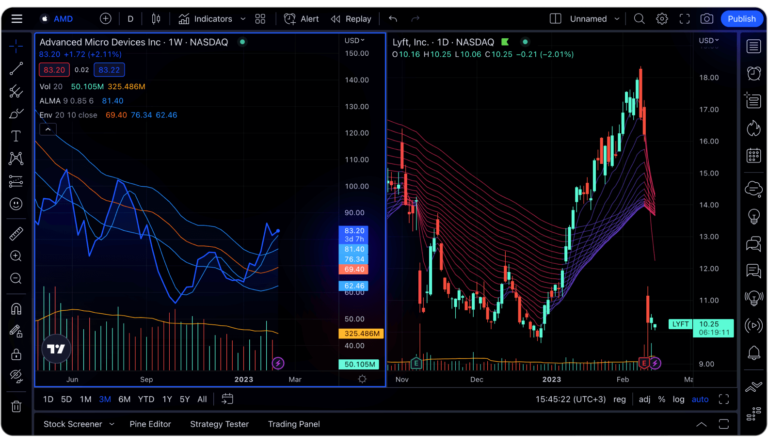Traditional Testing Approaches For GI Cancer Detection
Detecting gastrointestinal (GI) cancers in their early stages is crucial for successful treatment and improved patient outcomes. Traditional testing approaches, such as endoscopy, biopsy, and imaging techniques, have long been used to diagnose GI cancers. These methods involve invasive procedures that can be uncomfortable for patients and may carry risks. However, they have been the mainstay of GI cancer detection for many years.
Endoscopy, the most common traditional testing approach, involves inserting a flexible tube with a camera into the digestive tract to examine the organs for abnormalities visually. Biopsy is often performed during endoscopy to collect tissue samples for further analysis. Imaging techniques, such as computed tomography (CT) scans and magnetic resonance imaging (MRI), can provide detailed images of the digestive organs, helping to identify tumors or other abnormalities.
While these traditional testing approaches have been effective in diagnosing GI cancers, they have certain limitations that can impact their accuracy and reliability. For instance, endoscopy and biopsy can miss small or early-stage tumors that are not easily visible or accessible. In addition, these invasive procedures may cause discomfort, carry complications and risks, and sometimes require anesthesia.
Emerging Technologies In GI Cancer Detection
Advancements in technology have paved the way for novel testing approaches that address the limitations of traditional methods. These emerging technologies offer new possibilities for more accurate, minimally invasive, and convenient GI cancer detection.
One such technology is liquid biopsy, which has gained significant attention recently. Liquid biopsy involves the analysis of genetic material, such as circulating tumor DNA (ctDNA), circulating tumor cells (CTCs), or exosomes, present in a patient’s blood sample. This non-invasive approach allows for the detection of cancer-specific genetic alterations without the need for invasive procedures like endoscopy or biopsy.
Another promising technology in GI cancer detection is artificial intelligence (AI) algorithms. AI can analyze complex patterns and data sets to identify abnormalities indicative of cancer. By training algorithms on large datasets of GI cancer cases, AI can learn to recognize subtle patterns and make accurate predictions, aiding in early detection and diagnosis.
Next-generation sequencing (NGS) is another cutting-edge technology transforming GI cancer detection. NGS allows for the rapid and comprehensive analysis of a patient’s DNA, identifying genetic mutations and alterations that may be associated with cancer. This technique can provide valuable insights into the molecular characteristics of GI cancers and guide personalized treatment approaches.
Non-Invasive Testing Methods For GI Cancer Detection
In addition to liquid biopsy, other non-invasive testing methods are being explored for GI cancer detection. One such method is stool DNA testing, which involves analyzing DNA fragments shed by cancer cells in the gastrointestinal tract. By detecting specific genetic alterations in the stool sample, this approach can aid in the early detection of colorectal cancer.
Researchers are also investigating the use of breath tests for GI cancer detection. These tests analyze volatile organic compounds (VOCs) in a patient’s breath, which can alter the presence of cancer. By detecting unique patterns of VOCs, this non-invasive approach shows promise in the early detection of GI cancers.
Furthermore, researchers are exploring the potential of imaging techniques like virtual colonoscopy, which uses CT scans to create a 3D image of the colon. This non-invasive alternative to traditional colonoscopy can detect polyps and tumors without requiring invasive procedures.
The Future Of GI Cancer Detection: Personalized Medicine And Precision Oncology
As we delve into the frontiers of GI cancer detection, these novel testing approaches can potentially transform how we diagnose and treat GI cancers. By harnessing the power of technology and genetics, we can strive towards earlier diagnosis, personalized treatments, and improved patient outcomes.
Integrating these emerging technologies with advancements in molecular profiling and targeted therapies opens up new possibilities for personalized medicine and precision oncology. With a better understanding of GI cancers’ molecular and genetic mechanisms, healthcare providers can tailor treatment approaches to individual patients, optimizing efficacy and minimizing side effects.
In the future, we envision a scenario where routine screenings for GI cancers involve non-invasive tests such as liquid biopsy or stool DNA testing. These tests could detect cancer-specific genetic alterations early, enabling timely interventions and potentially preventing the development of advanced disease.
Moreover, using AI algorithms and NGS in GI cancer detection could lead to more accurate and efficient diagnosis, reducing the time and resources required for testing. This would benefit patients and healthcare systems by streamlining the diagnostic process and enabling timely treatment decisions.
Conclusion: The Promise Of Novel Testing Approaches In GI Cancer Detection
GI cancer detection is undergoing a revolution thanks to novel testing approaches leveraging technological advancements, genetics, and data analysis. Liquid biopsy, stool DNA testing, AI algorithms, and NGS are some examples of cutting-edge techniques reshaping the landscape of GI cancer diagnosis.
These innovative methods offer hope in the fight against GI cancers by enabling earlier detection, more accurate diagnosis, and personalized treatment approaches. As researchers continue to explore the frontiers of GI cancer detection, we can look forward to a future where this deadly disease is diagnosed at its earliest and most treatable stages, ultimately saving lives and improving patient outcomes.






